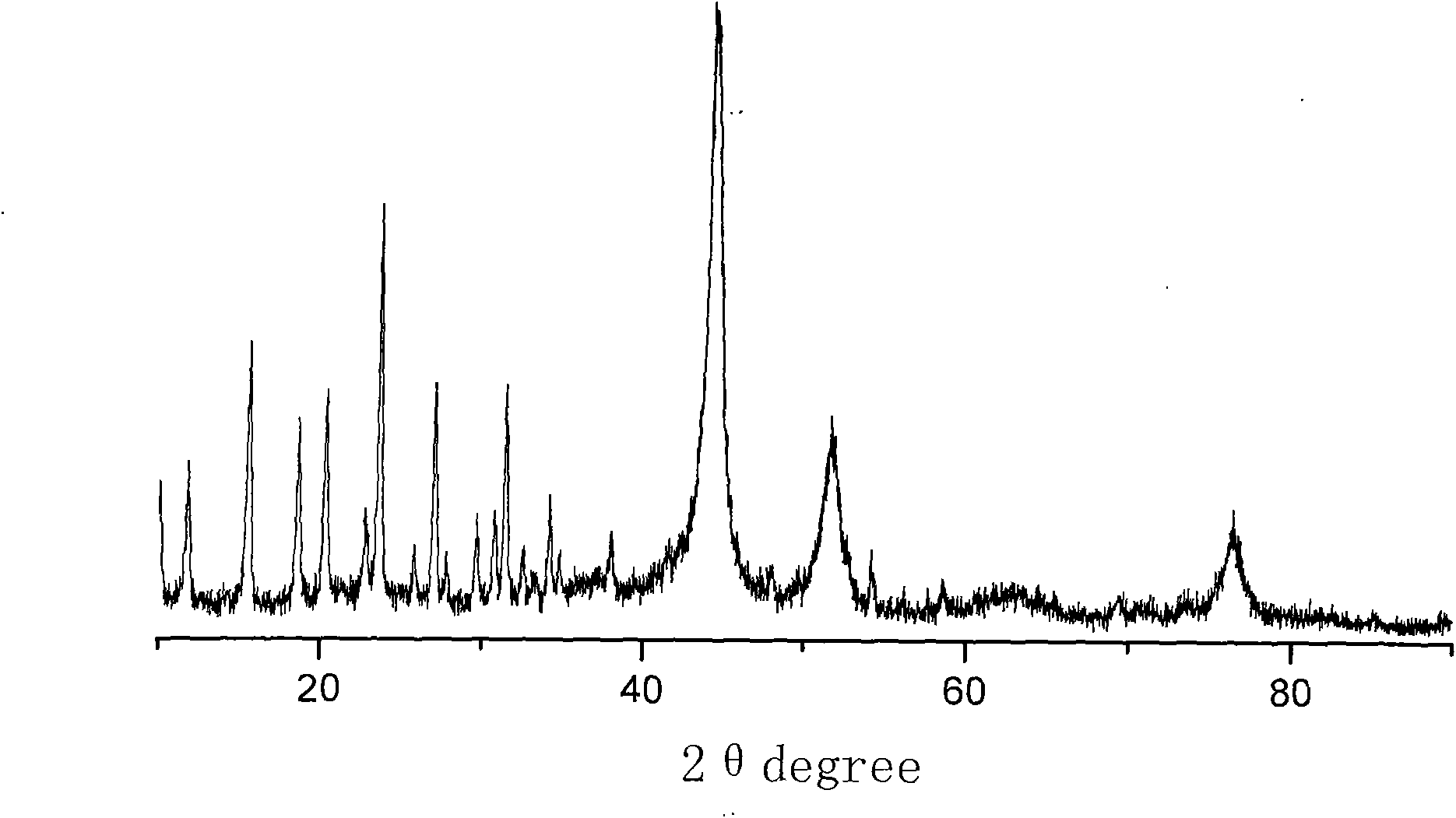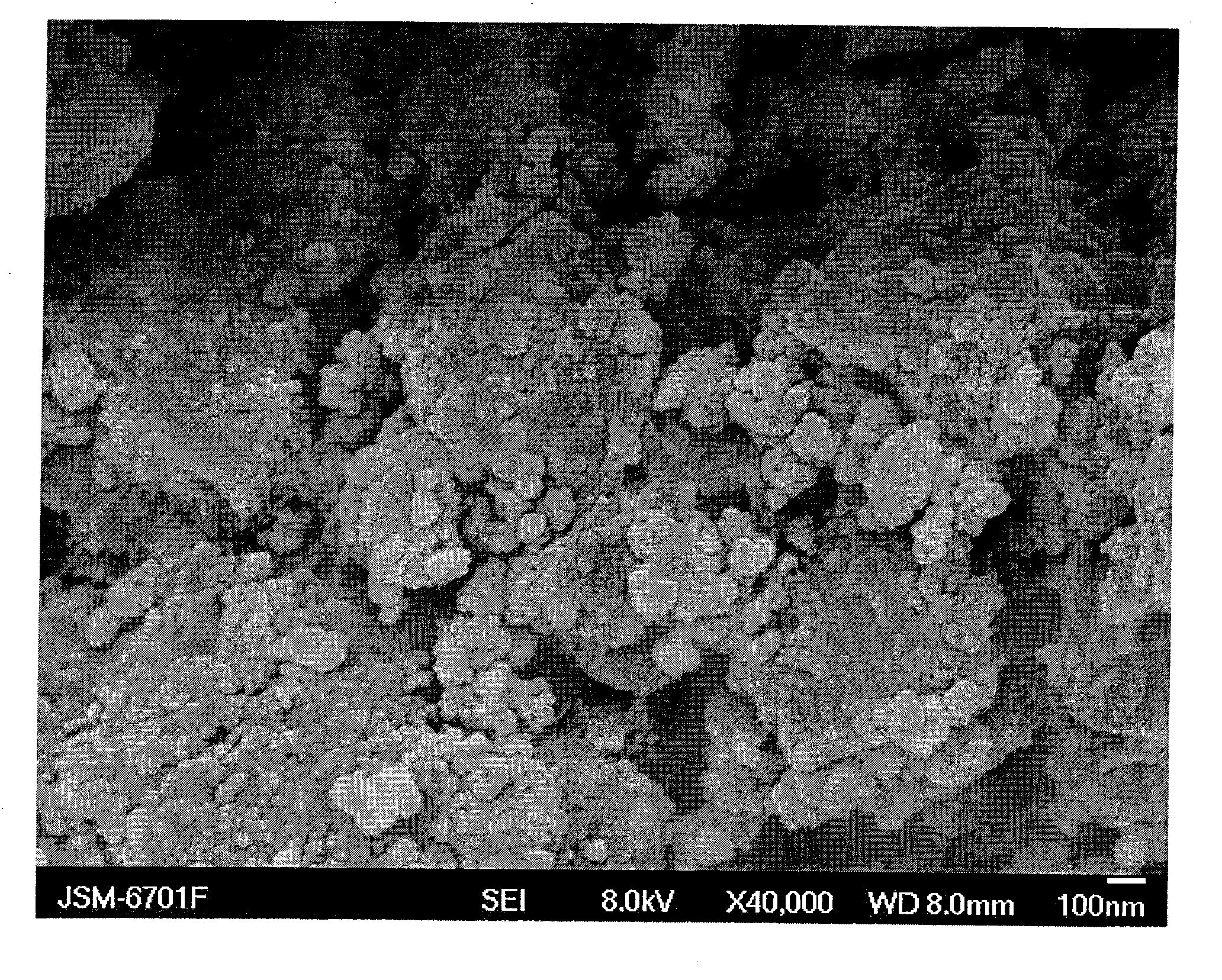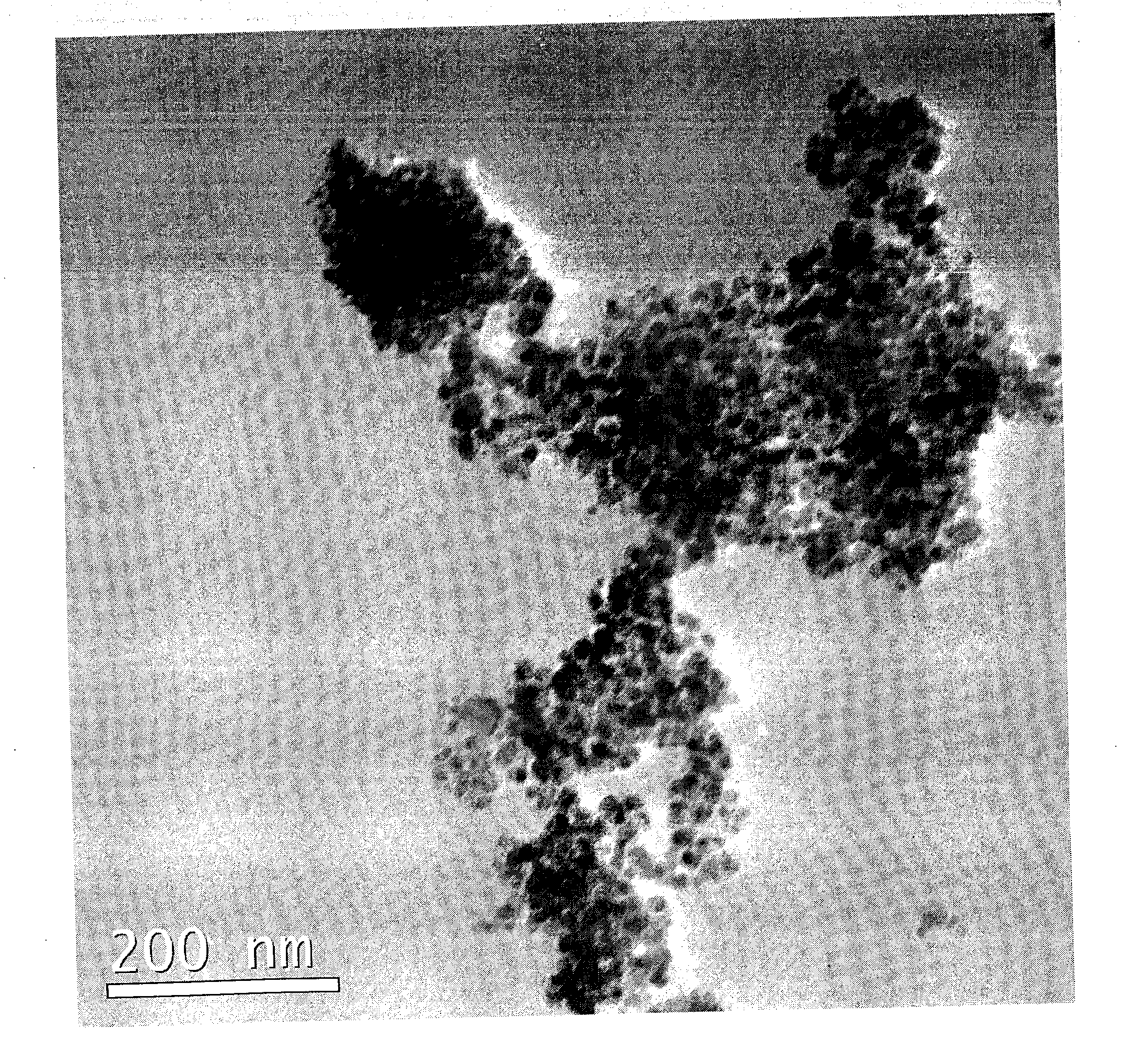Tar-resisting nickel-based catalyst for synthesizing TDA (Toluenediamine) and preparation method thereof
A nickel-based catalyst, catalyst technology, applied in molecular sieve catalysts, amino compound preparation, chemical instruments and methods, etc., can solve the problems of affecting the reaction process, reducing the reaction speed and selectivity, accelerating the generation of tar, etc. Mild hydrogenation conditions and the effect of improving product quality
- Summary
- Abstract
- Description
- Claims
- Application Information
AI Technical Summary
Problems solved by technology
Method used
Image
Examples
Embodiment 1
[0030] Embodiment 1: the preparation method of described catalyst is as follows:
[0031] (1), firstly add 6g HY molecular sieve to 100ml nickel nitrate solution with a concentration of 1mol / L, and stir at 60°C for 1 hour;
[0032] (2), then slowly drop 100ml of ammonium carbonate solution with a concentration of 1mol / L into the solution of step (1), finish adding within 30 minutes, immerse and precipitate at 40°C and stir for 22-24 hours;
[0033] (3), after filtering the product obtained in step (2), wash with distilled water until the pH is equal to 7, and dry at 40-50°C for 22-24 hours;
[0034] (4), the material obtained in step (3) is reduced to 450-500°C at a heating rate of 10°C / min for 2-3 hours in a hydrogen atmosphere, wherein the hydrogen flow rate is 30-50ml / min, and the pressure is 0.2- 0.3Mpa;
[0035] (5), the product after the reduction of step (4) is lowered to 25-28 ° C in a nitrogen environment, and 0.5-2% O 2 / air mixed gas surface passivation for 1-2 h...
Embodiment 2
[0044] Embodiment 2: the preparation method of described catalyst is as follows:
[0045] (1), first, add 6 g of HY molecular sieves to 100 ml of nickel acetate solution with a concentration of 1.12 mol / L, and stir for 2 hours at 50 ° C;
[0046] (2), then slowly add 100ml of potassium carbonate solution with a concentration of 1.12mol / L into the solution of step (1), finish adding within 30 minutes, and stir for 22-24 hours at 50°C for immersion and precipitation;
[0047] (3) After filtering the product obtained in step (2), wash with distilled water until the pH is equal to 7, and dry at 50-60°C for 19-22 hours;
[0048] (4) The material obtained in step (3) is reduced to 500-550°C at a heating rate of 10°C / min for 3 hours in a hydrogen atmosphere, wherein the hydrogen flow rate is 50-60ml / min and the pressure is 0.1-0.2Mpa ;
[0049] (5), the product after the reduction of step (4) is lowered to 23-25 ° C in a nitrogen environment, and 0.5-2% O 2 / air mixed gas surfac...
Embodiment 3
[0051] Embodiment 3: the preparation method of described catalyst is as follows:
[0052] (1), first add 6 g of HY molecular sieves to 100 ml of nickel citrate solution with a concentration of 0.8 mol / L, and stir for 3 hours at 40 ° C;
[0053] (2), then 100 ml of lithium carbonate solution with a concentration of 0.8 mol / L is slowly added dropwise to the solution of step (1), and the addition is completed within 30 minutes, and the immersion and precipitation are stirred for 18-20 hours at 60 ° C;
[0054] (3) After filtering the product obtained in step (2), wash with distilled water until the pH is equal to 7, and dry at 60-70°C for 16-19 hours;
[0055] (4), reducing the material obtained in step (3) to 500°C at a heating rate of 10°C / min for 4 hours in a hydrogen atmosphere, wherein the hydrogen flow rate is 60-80ml / min, and the pressure is 0.2Mpa;
[0056] (5), the product after the reduction of step (4) is lowered to 20-23 ° C in a nitrogen environment, and 0.5-2% O 2...
PUM
 Login to View More
Login to View More Abstract
Description
Claims
Application Information
 Login to View More
Login to View More - Generate Ideas
- Intellectual Property
- Life Sciences
- Materials
- Tech Scout
- Unparalleled Data Quality
- Higher Quality Content
- 60% Fewer Hallucinations
Browse by: Latest US Patents, China's latest patents, Technical Efficacy Thesaurus, Application Domain, Technology Topic, Popular Technical Reports.
© 2025 PatSnap. All rights reserved.Legal|Privacy policy|Modern Slavery Act Transparency Statement|Sitemap|About US| Contact US: help@patsnap.com



